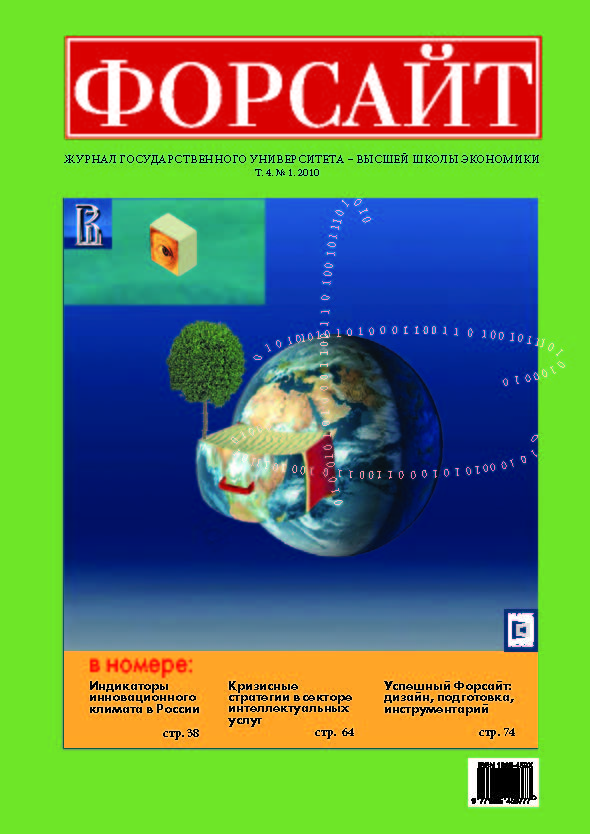Abstract
Policymakers responsible for improving the skill base needed for future economic development must assess the implications of radical technological change in the future. The example selected here is in nanoscience and nanotechnology. The objective of this paper is to demonstrate the importance of using more than one scenario of long term development when assessing such a complex issue as technology development and the demand for skills. Scenario forecasting is appropriately based on assessing plausible alternatives combined with horizon-scanning and determination of “weak signals”. This procedure will provide early warning about how far the key elements of various scenarios become manifest and those with maximum influence on emerging trends.
This procedural approach for forecasting future skills needs in a particular technology is to estimate short-term and medium-term prospects for its development from concrete scenarios. Nanotechnology, the paper shows, due to its relative infancy, its composition of numerous lines of knowledge development, and the many contested claims about the scope and speed of its evolution, poses particular challenges.
The paper assesses how confident we can be about skill and employment projections related to nanoindustries – and industrial applications of nanotechnology, i.e. in medicine; chemistry and the environment; energy; information and communication; heavy industry; and consumer goods. It proposes ways in which to provide more policy-relevant intelligence. Future skills forecasts, it argues, can be shaped using familiar ideas from innovation research - about technological paradigms and trajectories, and about diffusion and industry life-cycles. Requirements for skills will vary depending on how revolutionary nanotechnologies will be. Will innovation essentially extend existing nanoengineering techniques or embody more radical visions of molecular engineering and “bottom up” nanotechnologies? Responses to these questions can be derived from expert-based alternative scenarios.
References
Abicht L. (2009) Qualification Structure and Demand for Further Education of German Nanotechnology Companies/W. Luther and G. Bachmann (eds). Nano.DE-Report 2009: Status Quo of Nanotechnology in Germany. Bonn, Germany: Federal Ministry of Education and Research, Department of Nanomaterials, New Materials.
Barker B. (1990) Engineering Ceramics and High-temperature Superconductivity: Two Case Studies in the Innovation and Diffusion of New Materials. DPhil thesis. Manchester: PREST.
Bell D. (1964) Twelve Modes of Prediction -a Preliminary Sorting of Approaches in the Social Sciences. V. 93. Daedalus.
Beniger J. (1986) The Control Revolution: Technological and Economic Origins of the Information Society. Harvard University Press.
CEPIS (2006) Thinking Ahead on e-Skills for the ICT Industry in Europe. Brussels: Council of European Professional Informatics Societies, 2006. URL: http://ec.europa.eu/enterprise/sectors/ict/files/thinkingaheadone-skillsineuropereport_en.pdf.
Cohendet P., Ledoux M.J., Zuskovitch E. (1991) The Evolution of New Materials: A New Dynamic for Growth in Technology and Productivity: The Challenge for Economic Policy. Paris: OECD.
David P. A. (1991) Computer and Dynamo: the Modern Productivity Paradox in a Not-Too-Distant Mirror in Technology and Productivity. Paris: OECD.
Freeman C. (1974) The Economics of Industrial Innovation. Penguin, Harmondsworth.
Freeman C., Louca F. (2002) As Time Goes By: From the Industrial Revolutions to the Information Revolution. Oxford: Oxford University Press.
Freeman C., Perez C. (1988) Structural crises of adjustment, business cycles and investment behaviour/G. Dosi, C. Freeman, R. Nelson, G. Silverberg, G. Soete (eds.)//Technical Change and Economic Theory. London: Pinter. P. 38-66.
Green L., Jones B., Miles I. (2008) Skills for Innovation/INNOGRIPS Mini Study 03, Global Review of Innovation Intelligence and Policy Studies. URL: http://grips.proinno-europe.eu/knowledge_base/view/222/grips-mini-study-on-skills-for-innovation/.
Harper T. (2008) From Micro to Nanoelectronics: Disruption, Convergence or Evolution? Emerging Markets Semiconductor Applications Technology Symposium. Singapore: Suntec. URL: http://www.semiconsingapore.org/ProgrammesandEvents/cms/groups/public/documents/web_content/ctr_023570.pdf.
Hendry C. (1999) New Technology Industries. Skills Task Force Research Paper. London: DfEE.
Jorgenson D.W., Ho M.S., Stiroh K. J. (2008) A Retrospective Look at the U.S. Productivity Growth Resurgence Journal of Economic Perspectives. V. 22. № 1. P. 3-24.
Kaounides L.C. (1995) Advanced Materials. London: Pearson Professional.
Miles I. (1996) Information Technology & Information Society: Options for the Future. London: Economic & Social Research Council, PICT Policy Research Papers, 1988, № 2. Revised/reprinted as The Information Society: Competing Perspectives on the Social and Economic Implications of Information and Communications Technologies/W. Dutton (ed.). Information and Communications Technologies: Visions and Realities. Oxford: Oxford University Press.
NIA Forecast of Emerging Technologies (2007). London: Nanotechnology Industries Association. URL: http://www.nanotechia.org/lib/tmp/cmsfiles/File/NIA_TechnologyForecast_June2007.pdf.
Naisbitt J. (1982) Megatrends. Warner Books.
Roco M.C. (2007) National Nanotechnology Initiative -Past, Present, Future/Goddard W., Brenner D., Lyshevski S., Iafrate G. Handbook of Nanoscience, Engineering and Technology (2nd ed.). CRC Press (Taylor and Francis).
Rogers E.M. (1995) Diffusion of innovations (4th ed.). New York: Free Press.
Tether B., Mina A., Consoli D., Gagliardi D. (2005) A Literature Review on Skills and Innovation. How Does Successful Innovation Impact on the Demand for Skills and How Do Skills Drive Innovation?/CRIC report for the Department of Trade and Industry. London: Department of Trade and Industry.
The Handbook of Technology Foresight (2008)/L. Georghiou, Cassingena Harper J., M. Keenan, I. Miles, R. Popper (eds.). UK: Cheltenham and Northampton; USA: MA, Edward Elgar.
Utterback J.M. (1996) Mastering the Dynamics of Innovation. Harvard Business School Press.
Vanston J., Elliot L. (2003) Nanotechnology: A Technology Forecast. Technology Futures Inc. for Texas State Technology College, Waco, Texas.
Vernon R. (1966) International Investment and International Trade in the Product Cycle//Quarterty Journal of Economics. V. 80. P. 190-207.
Von Tunzelmann G.N. (1978) Steam Power and British Industrialization to 1860. Oxford: Clarendon Press.

This work is licensed under a Creative Commons Attribution 4.0 International License.

